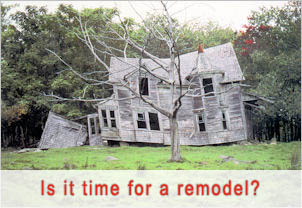
Key Takeaways
- Start each second story addition with due consideration of your foundation and framing to protect your home. Getting structural engineers and wise contractors involved early can help you discover and mitigate lurking weaknesses before you break ground.
- Make it look like it belongs by styling your addition to match your home’s current architecture, materials and color scheme. Joint planning with your architect will avoid mismatched aesthetics and even increase property values.
- Think Occupant-Friendly: Prioritize Interior Flow – The Key To A comfortable, livable addition. Careful stair placement and open floor plans go a long way in making the expanded home more accessible.
- Make sure you adhere to all local building codes and acquire any permits needed to avoid expensive legal issues and delays. You can be the victim of zoning laws and guess what, authorities don’t want to talk with you.
- Plan for surprise costs — like utility upgrades, landscaping changes, and yes, even potential property tax increases — by budgeting a contingency fund of at least 10–20%. Check your budget regularly and communicate with your builder to expect surprises.
- Think long-term livability by maximizing natural light, soundproofing, and creating flexible spaces that can evolve with your family. Proactive planning will keep your new addition functional and fun for years to come.
Second story addition mistakes tend to arise from bad planning, missed permits or inadequate structure inspections. A lot of homeowners overlook a thorough examination of their existing foundation prior to work commencing. Other common blunders involve failing to properly tie in the new level to the old design, resulting in leaks or cracks down the road. Small holes in the plan — the wrong floor heights, missed wiring steps — can result in huge additional costs and delays. Neglecting initial conversations with local builders or inspectors results in code problems and delays. To assist, this post will demonstrate where the majority of plans fail and which action steps can prevent these typical mistakes.
Major Pitfalls to Avoid in a Second-Story Addition
Second story additions are complicated projects with a huge potential for mistakes. These are critical second story addition mistakes to avoid if you want a structurally sound, visually balanced, interior comfortable and code compliant addition. Here’s a rundown of the most important traps and how to fix them.
1. Foundation Neglect
Not inspecting the original foundation is a common mistake. The structure must support the added load of a new floor, and neglecting this step can cause significant damage or expensive future repairs. Let a good contractor check your foundation and advise reinforcement if necessary. Adding onto a weak foundation is asking for cracks, uneven settling, and dangerous conditions. Of course, local building codes on foundation strength must be met. These frequently necessitate extra footings or steel supports. Some homeowners decline this step to save money, but it inevitably costs them more later on.
2. Structural Misjudgment
Underestimating load-bearing walls or existing framing can kill a project mid-way. New walls should sit directly above existing structural supports. Ignoring this can lead to costly structural remedies once construction is underway. Bringing in a structural engineer or experienced remodeler ahead of design has merit. Roof integration is another technical challenge — new second stories have to tie in perfectly with the existing roofline or water leaks and structural asymmetry can result. Be ready for some hidden horror, like out of plumb walls or asbestos, which only reveals itself in a wall tear-down.
3. Aesthetic Disharmony
A mismatched, second story addition can look tacked on. Choose materials and trim that reflect the rest of the home—matching siding, roof tiles and window styles make a world of difference in creating a cohesive look. Bad window alignment, particularly if new windows do not align with the first floor, can throw off a home’s appearance and reduce curb appeal. Go over elevation drawings with a fine-tooth comb to sniff out mismatches early. Architects may suggest design tweaks, such as modifying roof pitch or incorporating dormers, to integrate old and new.
4. Awkward Interior Flow
Bad planning can lead to choppy or disconnected rooms. Flow from room to room, particularly at those places where stairways join the floors. Don’t bury your stairs in a corner or obstruct your open-concept flow with new support beams. Open floor plans promote communication, light and air circulation. Consider how bedrooms, bathrooms and communal spaces connect to each other and design for practical traffic flows. Planning poorly here can make the home feel cramped or fragmented.
5. Regulatory Non-compliance
Ignoring permits can stop a project for weeks. Local zoning laws will come into play regarding the size, height and location of your addition. Research these up front, and modify your plans accordingly. Never forget building permits and don’t forget to allow time for inspections. Be current on code updates—requirements can change, particularly when it comes to energy efficiency or safety. Reserve an additional 10–20% of your budget for these regulatory requirements and unexpected compliance expenses.
Understanding The True Cost
A second story addition is a tricky project that can translate into a lot of unexpected costs in addition to those outlined in your initial budget. The combined price tag usually falls somewhere between $80,000 and $1,000,000+. Labor by itself can consume 30-50% of the budget, and the entire job can consume an entire year. Certain cities such as Los Angeles or New York will drive prices even higher. The table below describes common, and hidden, costs you can encounter.
Expense Category | Estimated Range (USD) | Notes |
Labor | 30–50% of total | Varies by location and project size |
Foundation Reinforcement | $5,000–$40,000 | Required if current foundation is weak |
Staircase Installation | $2,400–$6,000+ | Depends on size and materials |
Roof Replacement | $8,000–$30,000+ | May be necessary for structural support |
Utilities Upgrade | $3,000–$20,000 | Electrical, plumbing, HVAC |
Permit Fees | $1,000–$10,000 | Local government requirements |
Landscaping/Exterior | $2,000–$20,000 | Restoring yard, facade, driveway |
Contingency Fund | 10–20% of total | For unforeseen costs |
Hidden Expenses
- Temporary relocation if the house is unlivable during construction
- Foundation reinforcement and engineering assessments
- Upgrades to electrical, plumbing, and HVAC systems
- Waste removal and debris hauling
- Increased permit fees and inspection costs
- Landscaping repairs after heavy equipment use
- Higher property taxes after reassessment
- New or extended insurance coverage
- Additional project management fees
Landscaping is frequently ignored. Heavy equipment can tear up grass, gardens or driveways. Utility upgrades are prevalent, as older homes might not handle new loads. Property tax rates could increase when the government revalues your property.
Finish Allowances
Set the proper finish allowance early. That is, ensuring you budget for nice flooring, fixtures and cabinetry so you achieve the look you desire. Good stuff makes your new space stick, and worth the premium if you live in the room every day.
Consult with your builder on items to splurge or save. Occasionally, plain finishes keep you on budget. Concentrate on aspects such as robust flooring, optimal lighting, and fixtures that complement your everyday requirements. Choose finishes that suit your life, not just what’s photo-worthy. This reduces eleventh-hour scrambling and controls costs.
Contingency Funds
- Always budget an extra 10–20% of total project costs
- Inquire your builder about typical hazards – for example, being stalled by the weather or materials.
- Monitor expenses and refresh your buffer as the work advances
- Be prepared to stop and re-scope if additional expenses arise.
Communicate frequently with your builder. Monitor your budget. These small modifications accumulate quickly. If you notice costs going up, re-evaluate your plan and reprioritize.

Why Your Existing Structure Matters
A second-story addition isn’t simply about expanding upwards, it’s about making that new tier cohesive with your existing home. Your current structure defines what’s feasible. Your layout, foundation, and mechanical systems all establish constraints that must be respected. Taking care of these things upfront allows you to sidestep costly missteps and guarantees the final home is harmonious and beautiful.
Load-Bearing Walls
Load bearing walls are important. They support the load of your home and need to remain anchored for the structure to be secure. Often the easiest way to add a second story is to place new walls directly above these powerful points. This eliminates the requirement for additional beams or steel supports and makes the construction less complicated and less expensive. If you tear down or relocate these walls, you often have to reinforce the structure, which contributes to both complexity and cost.
An architect needs to go over what walls can be altered, and which have to remain. Local building codes can define strict regulations on what you can mess with. Not planning for these needs can make the house unsafe or bring fines. Consult a qualified professional before implementing any changes.
Foundation Integrity
The skeleton is the frame of it all. Cracked or sinking, or other signs of damage, can spell disaster if you pile on some additional weight. Get a pro to check your foundation before you blaze ahead. They’re going to examine the concrete, soil, and drainage to determine if the ground can support a second story.
If not, you might be in need of a repair. Occasionally the foundation needs to be wider or deeper. Soil type is important as well—clay, sand, and rock all act differently. Repairing the foundation is usually expensive, but failing to do so risks catastrophic damage down the road.
Mechanical Systems
Putting in additional rooms increases the strain on your heating, cooling, plumbing and electrical systems. A lot of older homes simply aren’t wired for the additional strain. You could require a second furnace, additional plumbing or a new electric panel. The plumbing and ductwork frequently doesn’t align with the new floorplan – causing additional labor.
Experts can assist design these enhancements so that all is up to code and functions nicely. Your systems should integrate with the new area, not appear to be an afterthought. Not upgrading can lead to breakdowns or safety hazards for all of you at home.
The Livability Factor
A second-story addition offers the allure of additional space and improved views without minimizing the yard — a big deal for families in crowded cities. It’s something that can contribute enduring value and market appeal, yielding a 60–80% ROI in numerous areas. Nailing the livability requires more than just throwing in some extra square meters. Transitions between floors, the lighting saturation of new rooms, the acoustics, and new space compatibility with future needs all influence daily life post-build. Construction can be inconvenient to daily life, especially during the weather-related delays typical of this project. Planning for livability helps that extra room actually enhance your family’s quality of life.
Natural Light
Designing for daylight is crucial. Where you place windows and openings transforms the new floor’s vibe. Big windows or skylights help illuminate spaces that would otherwise feel claustrophobic, especially in crowded cities. Consider the plan’s orientation—north- or south-facing windows bring in very different light at different times of day, so positioning them counts for both warmth and mood. Complementing view windows with reflective surfaces, such as light-coloured walls or glass, can diffuse daylight deeper into spaces. In addition to saving lighting costs, this makes the space feel open even if the footprint remains the same as the main floor. Bad planning in this area can really make living spaces seem dark and under-utilized.
Noise Travel
Sound frequently travels a greater distance in a two-story house. Good inter-floor soundproofing prevents footsteps and voices from leaking down. Install dense insulation and a solid floor to reduce noise. For adjoining walls, particularly where bedrooms adjoin living spaces, special drywall or acoustic panels can come to the rescue. Put boisterous rooms—like playrooms or home offices—well removed from tranquil areas like bedrooms. Little things, like plush carpets or door seals, can reduce noise. Bedrooms and dens get additional acoustic attention, helping to make the whole house quiet.
Future Use
- Home office
- Kids’ playroom
- Guest bedroom
- Fitness area
- Studio or hobby room
- Rental suite
- Extra storage
One adaptable space can meet lots of demands through the years. Sliding doors or movable walls allow you to adjust layouts as life evolves. Multipurpose zones–say, a guest + study combo—aid in squeezing maximum usage out of each available square meter. Plan for additions, leave paths for plumbing or wiring in case the family expands or needs evolve down the line.
Understanding the Permit Process
No matter where you live, obtaining the appropriate permits for a second story addition cannot be overlooked. Every city and municipality have their own rules, so it’s wise to review your local government’s website for specific directions and codes. Building and zoning codes can vary widely, and being informed will prevent expensive errors. Small projects may require a few weeks of permits, but a full second floor typically means months of wait — some are even up to a year.
Preparing for the permit is really about gathering a clean plan and documentation. This typically consists of architectural plans, plot plans, engineering reports and occasionally energy calculations. Top reasons for delays include missing paperwork. Each has to conform to the local code on such things as setbacks, height limits, floor area ratios, and so forth. For starters, it pays to team with an architect or engineer who understands the local process. They can spot problems early, assist with changes, and talk the same language as the permitting office.
It can really help to be on good terms with local officials. Certain cities have pre-application meetings or plan reviews that allow you to ask questions before you submit anything formal. This can identify issues early and avoid aggravating back-and-forth later. Staying in contact ensures you’ll be updated on your application status and requests for additional information won’t slip through the cracks.
Understanding the permit timeline is essential for effectively planning your project and managing expectations. For a simple home addition, four to six weeks may suffice. As for a second story, stay tuned, longer review to come. The city may request modifications to your plans, particularly if something conflicts with zoning ordinances or building codes. Every revision round introduces time and occasionally new fees. Make sure your budget includes not only construction materials and labor, but permit fees, which can be significantly more for large projects. These vary depending on size and scope, and bigger builds like second stories attract more attention from inspectors.

Choosing Your Professional Team
Choosing the right professional team for your second story addition is one of the most important decisions you’ll make. Scaling up is a major undertaking, and the expertise and reliability of your team can define the success of the entire project. Here are key points to keep in mind when selecting your crew:
- Work with specialists in second story additions – Choose professionals who have extensive, proven experience with similar projects, backed by photographs, plans, and client testimonials.
- Look for problem-solvers – A skilled builder will anticipate costly issues early, such as assessing if your foundation can handle extra weight or if your roofline is structurally sound.
- Review relevant past projects – Ensure they’ve handled additions like yours, not just ground-floor extensions or small remodels, as second-story work has unique challenges.
- Interview multiple contractors – Don’t settle for the first or cheapest option. Meet at least three and ask how they’d handle tricky issues like weatherproofing during roof removal or minimizing disruption to your household.
- Discuss specifics – Clarify schedules, materials, and on-site supervision. A good contractor listens, explains clearly, and addresses concerns directly—avoid anyone evasive or dismissive.
- Communicate your needs and budget openly – Be specific about your intended use for the new space to avoid cookie-cutter designs. Set a budget with a 15–20% contingency for surprises such as hidden wiring or updated code requirements.
- Verify permits and timelines – Ensure your contractor is proactive about obtaining necessary approvals to prevent costly delays.
- Check credentials and reputation – Confirm licenses, request references, and read reviews. Work should meet local codes and safety regulations to avoid future fines or repairs.
A professional team that is experienced, transparent, and detail-oriented will not only deliver a structurally sound and beautiful addition but also spare you from avoidable setbacks and stress.
Conclusion
To build up on your home, begin with a plan that addresses actual needs. Use a strong team. Look at the house’s old bones. Frame Weight – Verify the weight the frame supports. Look out for holes in planning or poor estimates of cost. Little things, like improved stairs or sound management, enhance living. Cut corners, and you pay more down the road. Good work now, time and stress saver later. Local ordinances are important, so make sure to obtain permits well in advance. Locate a pro who understands second story additions. Request evidence of previous work. For hard-won tips and firsthand tales from survivors, explore the blog or drop a query.
Frequently Asked Questions
1. What are common mistakes with second story additions?
Typical second story addition mistakes are underestimating costs, neglecting structural constraints, avoiding permits and employing inexperienced professionals. These mistakes can lead to project delays, safety hazards and increased costs.
2. How does my existing structure affect a second story addition?
Your existing structure needs to bear the additional load. A check up from a licensed engineer makes sure it’s safe and won’t cost you a fortune in repairs down the road.
3. Why is getting the right permits important?
Permits that protect your addition are local building codes and safety standards. Building without the proper permits can result in fines or even worse, being forced to tear down the addition.
4. How can I control costs for a second story addition?
Establish a well-defined budget, obtain comprehensive quotes, and anticipate contingencies. Working with professionals with experience helps you avoid surprise costs and mistakes.
5. What should I look for in a professional team?
Find licensed, insured and experienced architects, engineers and builders. Check their references and past work.
6. Does a second story addition affect my home’s livability?
Yes, construction can interfere with your daily life. Schedule around noise, dust and maybe a temporary relocation to keep your family comfy.
7. How long does a second story addition usually take?
Most second story additions take a few months. The precise timing will vary based on design complexity, permitting and weather. Communicating clearly to your team helps set expectations.
Your Dream Second Story & Primary Suite Built by Mares & Dow Construction & Skylights – Let’s Create the Extra Space You’ve Been Dreaming Of
Unlock your home’s full potential with a custom second story or primary suite addition from Mares & Dow Construction & Skylights. With over 40 years of experience, we specialize in high-quality expansions that blend seamlessly with your home’s existing structure and lifestyle needs.
Whether you’re looking to add a luxurious primary suite, expand upwards with a second story, or enhance your living space in other ways, we customize each project to suit your vision, your home’s architecture, and your long-term goals.
Key benefits of our second story & primary suite services include:
• Expanding your living space to accommodate growing families or additional functionality
• Boosting your property’s value with expert design and construction
• Creating energy-efficient, stylish living areas designed around your needs
Proudly serving Contra Costa County—including Alamo, Danville, Orinda, Martinez, and San Ramon—Mares & Dow Construction & Skylights is your trusted partner for functional, beautiful, and lasting home expansions.
Contact Mares & Dow Construction & Skylights today for a free, no-obligation quote and let’s build the second story or primary suite of your dreams!
Disclaimer
The materials available on this website are for informational and educational purposes only and are not intended to provide construction, legal, or professional advice. You should consult with a qualified general contractor or industry professional for advice concerning any specific construction project, remodeling plan, or structural concern. Do not act or refrain from acting based on any content included on this site without seeking appropriate professional guidance. The information presented on this website may not reflect the most current building codes, regulations, or industry best practices. No action should be taken in reliance on the information on this website. We disclaim all liability for actions taken or not taken based on any or all of the contents of this site to the fullest extent permitted by law.



















 based on
based on 

